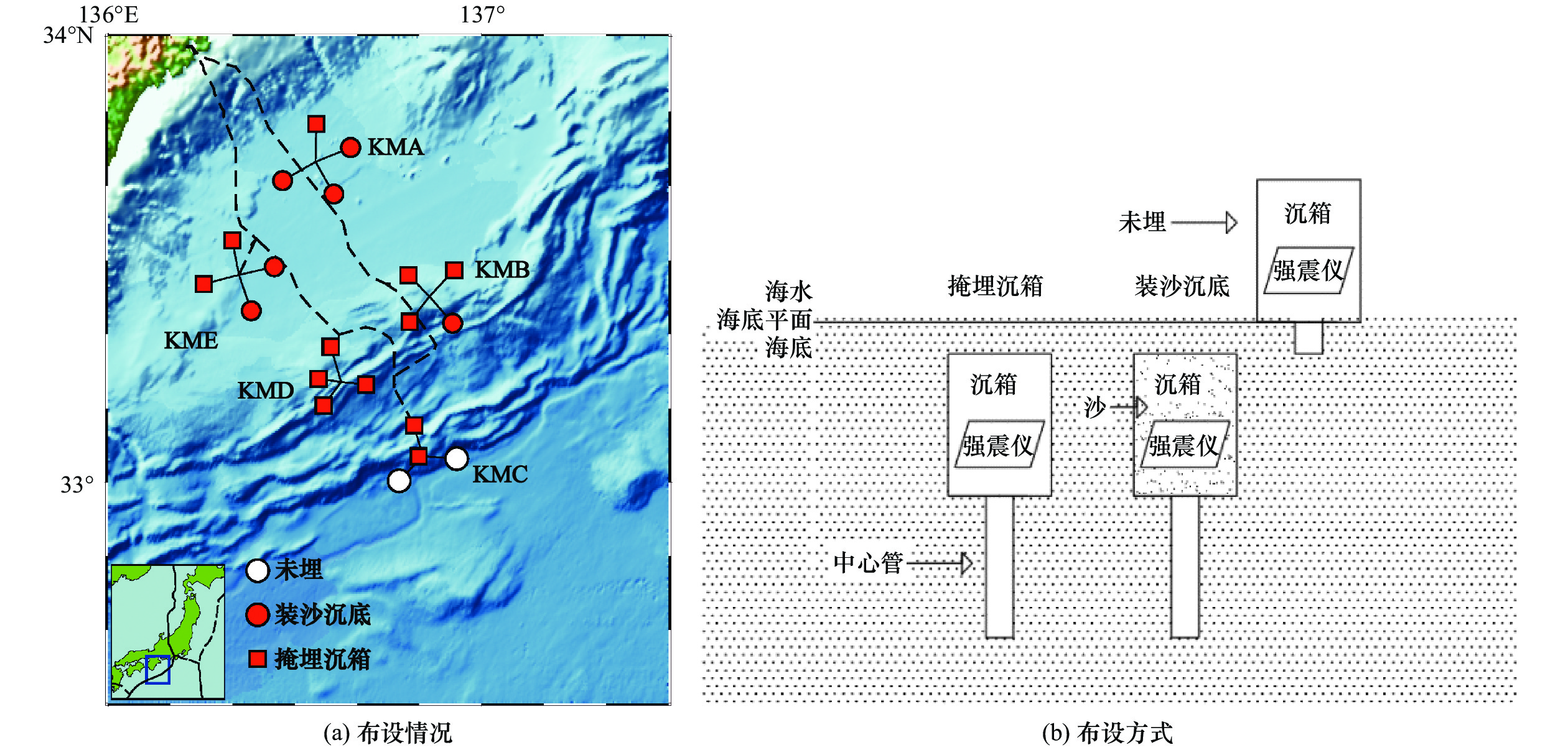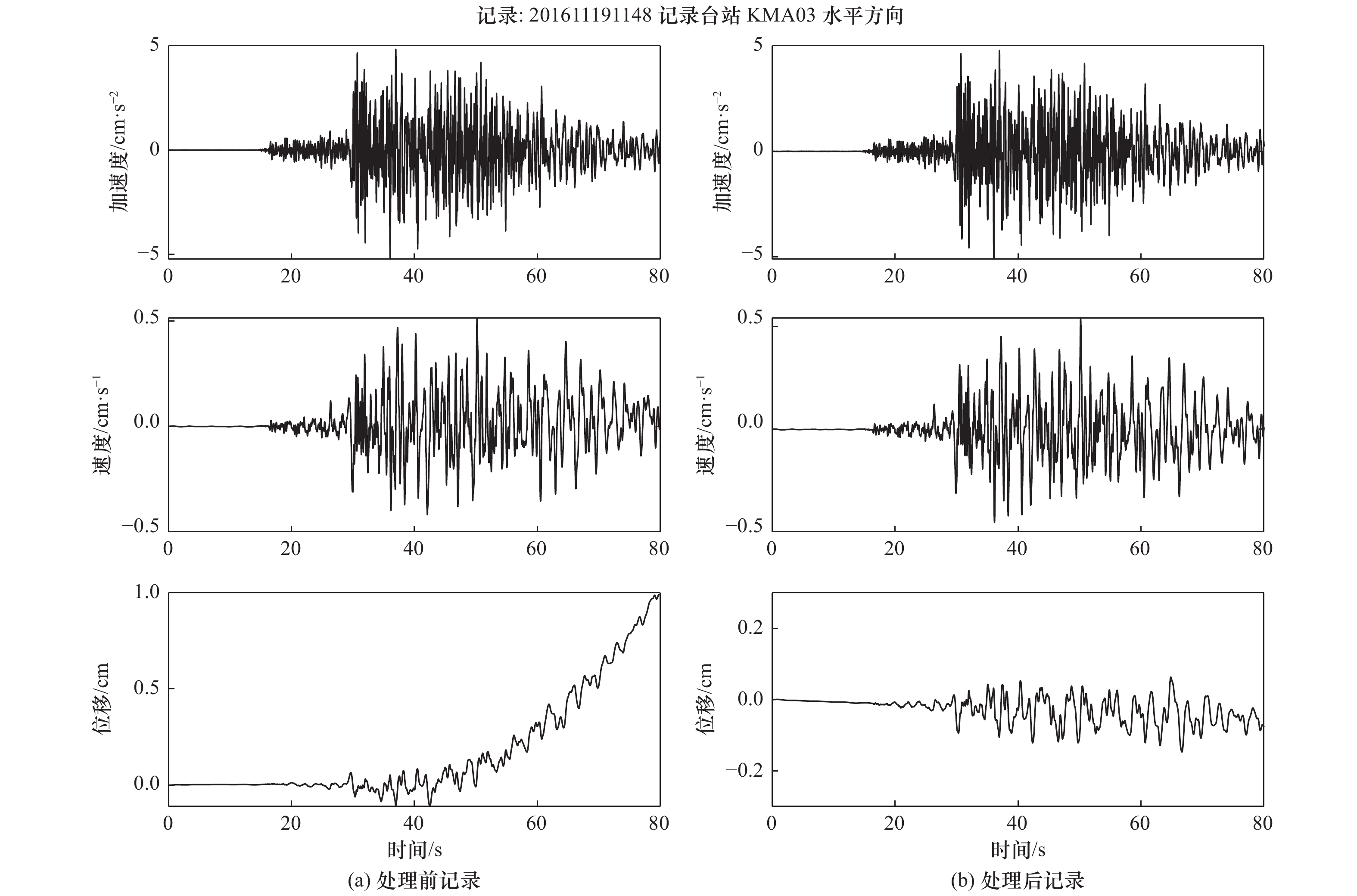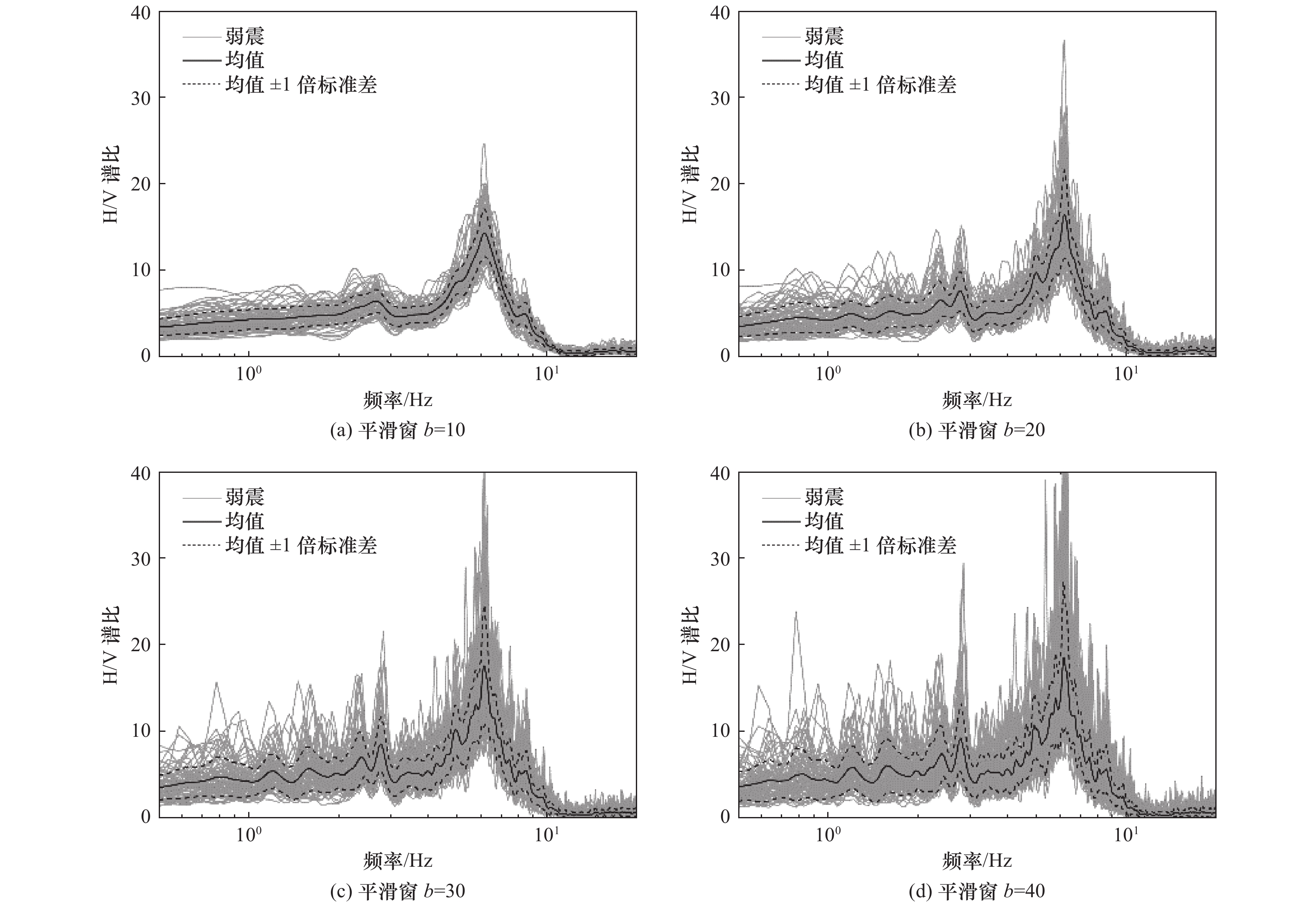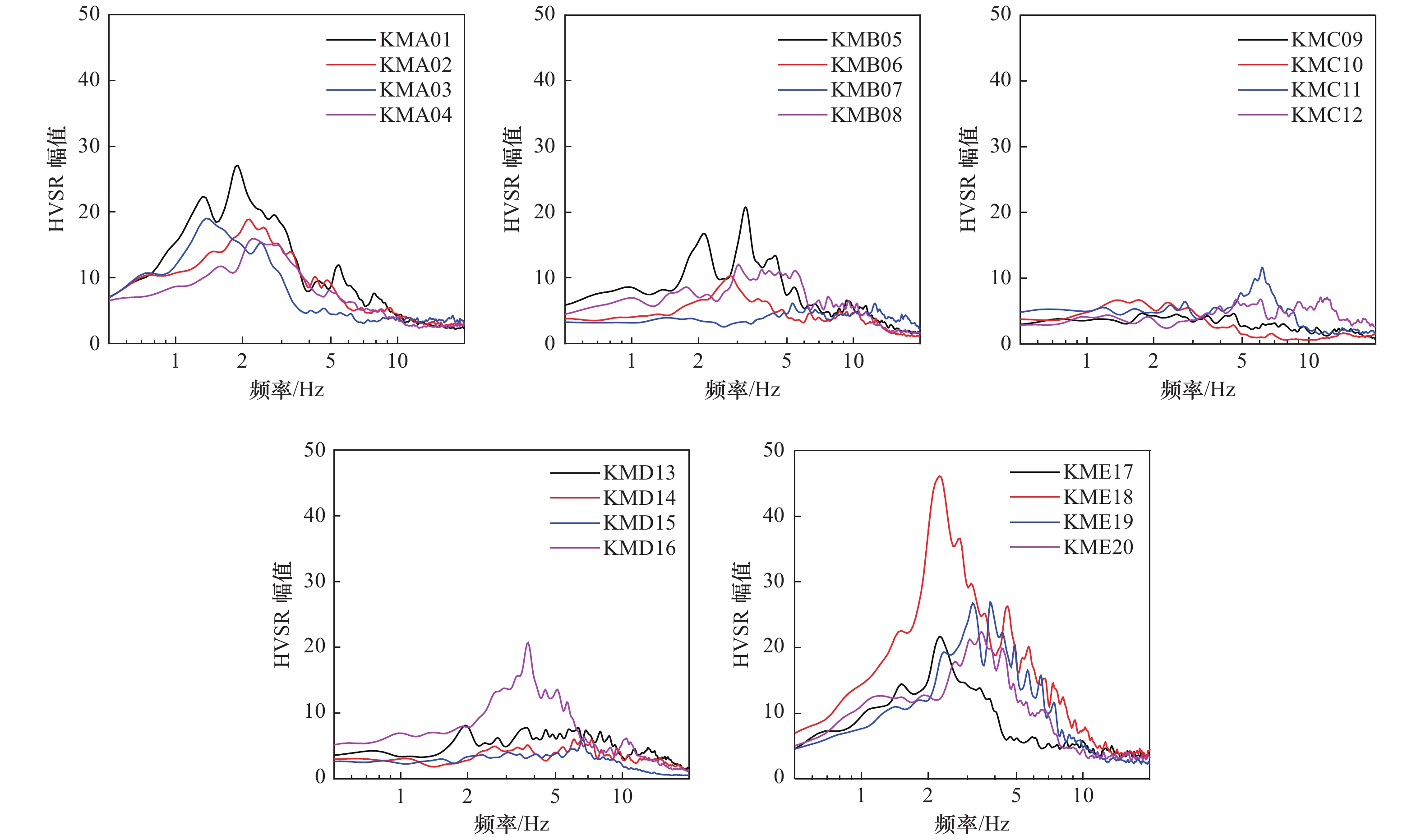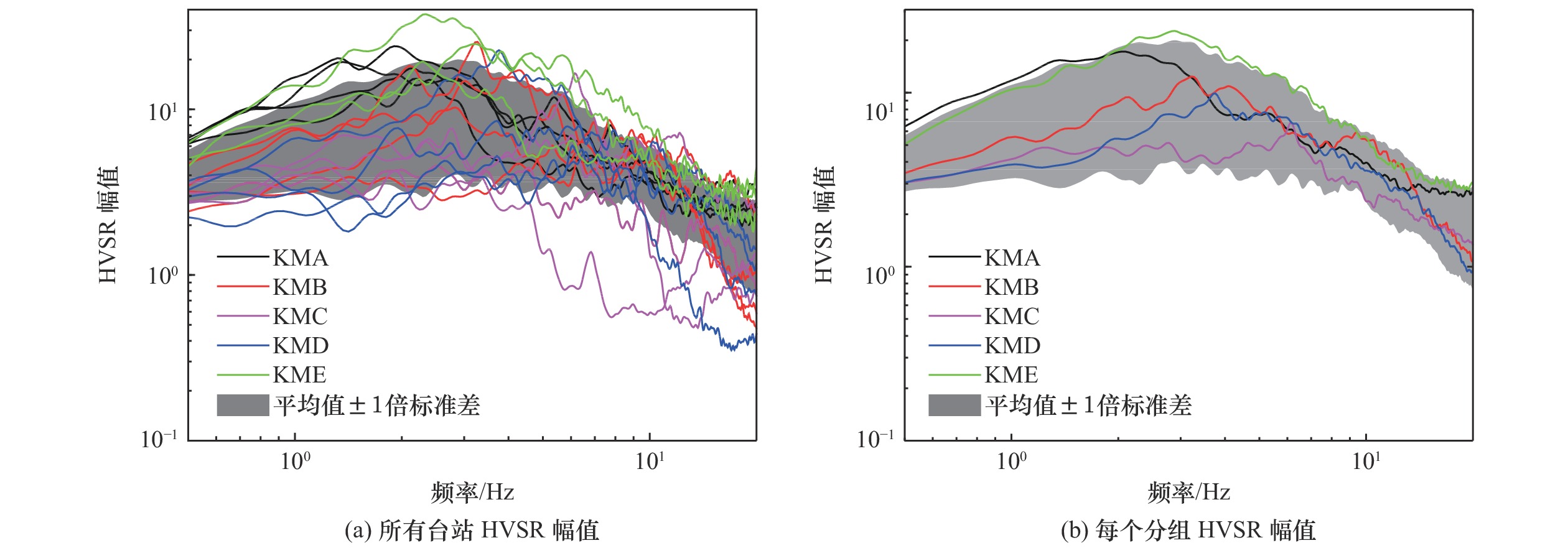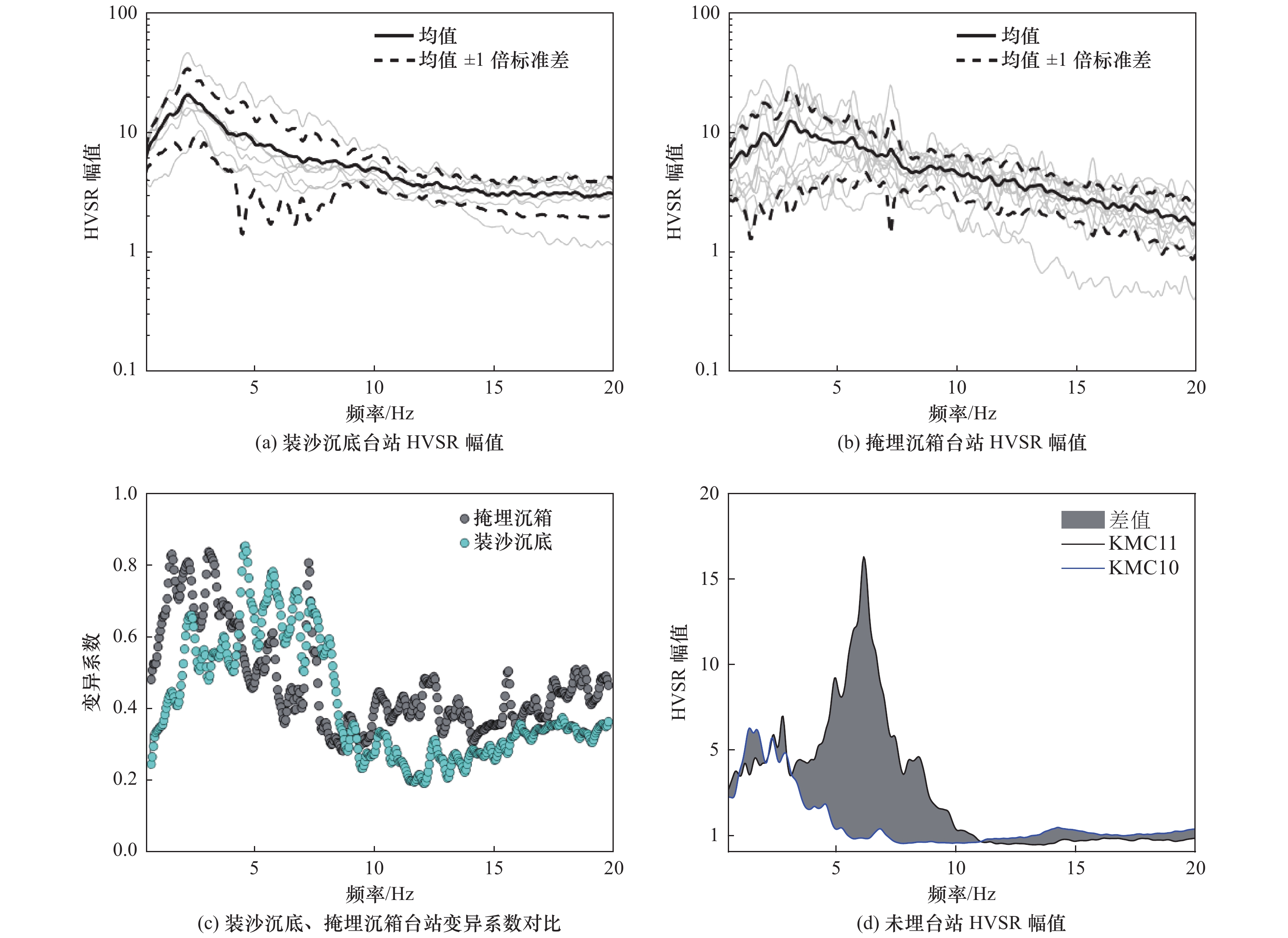The Study of Site Effect of DONET1 Offshore Ground Motions Based on HVSR
-
摘要: 为基于谱比方法研究海底地震动场地效应,选取日本DONET1台网的20个海底台站2014—2021年记录的1634组地震数据,对其进行筛选和处理后,利用水平与竖向谱比(HVSR)方法考虑不同布设对海底5组节点台站(KMA、KMB、KMC、KMD、KME)谱比特征的影响。研究结果表明:KMA与KME节点台站具有相似的场地特征,KMB与KMD节点台站分散布置在2种场地,KMC节点台站场地与其他节点均不相似,这与长期地质调查结果相似;海底台站谱比曲线呈多峰值现象,其中KMB、KMC、KMD分组台站利用HVSR方法识别的主频变异性较高,KMA、KME分组台站主频较稳定;相同地形条件下,布设方式相同的海底台站谱比曲线随频率分布相似,海底复杂场地条件下,采用装沙沉底方式布置的台站识别场地条件时出现偏差;海底复杂因素对掩埋沉箱方式布设的台站谱比曲线的影响主要集中在频率<5 Hz的低频处;海底复杂因素对未埋入海底台站谱比曲线的影响主要集中在频率为5—10 Hz的高频处。研究结果可为海底地震动场地效应研究提供参考。
-
关键词:
- 海底地震动 /
- 水平与竖向谱比(HVSR) /
- 场地效应 /
- 地震台网
Abstract: For study the site effect, a group of 20 stations in the DONET1 network, which was used for earthquake and tsunami warning, have been deployed on the seafloor as large earthquakes of magnitude continue occur in offshore around the world and cause serious secondary disasters. In this paper, based on the 1634 group offshore ground motion data recorded by 20 offshore stations (4 stations in a group named KMA, KMB, KMC, KMD, KME) in the DONET1 network, the spectral ratio characteristics of offshore stations were studied by HVSR method after data processing. The results shows: (1) The stations in the KMA and KME groups may be located in the same geological state on the seafloor, and the stations in the KMB and KMD groups may be distributed in two different geological states on the seafloor. The stations in the KMC group are different from those in the previous geological state, which is similar to the results of long-term geological survey. (2) The spectral ratio curves with multiple peaks, and with large variation coefficient of dominant frequency for offshore stations. (3) The HVSR curves of offshore stations with the same buried conditions and topographic condition have good consistency. In complex seafloor, site buried with sand conditions is deviated due to the influence of caisson sand filling when identification of site conditions use spectral ratio method. The influence of complex seafloor factors on the HVSR curve of stations with buried caisson is mainly at the low frequency of less than 5 Hz.The influence of complex seafloor factors on the HVSR curves of unburied offshore stations is mainly concentrated on the high frequency range of 5—10 Hz.The results can provide a reference for the study of the site effect of offshore ground motion.-
Key words:
- Offshore ground motion /
- HVSR /
- Site effect /
- Seismic network
-
表 1 DONET1台网海底台站信息(Kaneda等,2015)
Table 1. The information of DONET1 offshore sites(Kaneda et al,2015)
布设方式 台站命名 纬度/° 经度/° 海水深度/m 记录数量 掩埋沉箱 KMA01 N33.805 E136.557 2 039 96 装沙沉底 KMA02 N33.752 E136.649 2 011 107 装沙沉底 KMA03 N33.648 E136.604 2 063 78 装沙沉底 KMA04 N33.678 E136.467 2 054 82 掩埋沉箱 KMB05 N33.477 E136.926 1 998 83 装沙沉底 KMB06 N33.358 E136.922 2 499 95 掩埋沉箱 KMB07 N33.361 E136.807 1 980 101 掩埋沉箱 KMB08 N33.466 E136.804 1 924 101 掩埋沉箱 KMC09 N33.058 E136.831 3 511 100 未埋 KMC10 N33.053 E136.933 4 247 123 未埋 KMC11 N33.003 E136.779 4 378 122 掩埋沉箱 KMC12 N33.128 E136.819 3 784 114 掩埋沉箱 KMD13 N33.220 E136.690 2 441 88 掩埋沉箱 KMD14 N33.173 E136.577 2 350 89 掩埋沉箱 KMD15 N33.233 E136.563 1 909 76 掩埋沉箱 KMD16 N33.305 E136.596 1 970 95 装沙沉底 KME17 N33.485 E136.445 2 054 20 装沙沉底 KME18 N33.386 E136.383 2 052 23 掩埋沉箱 KME19 N33.446 E136.256 1 909 20 掩埋沉箱 KME20 N33.544 E136.332 1 977 21 -
[1] 陈苏, 周越, 李小军等, 2018. 近海域地震动的时频特征与工程特性. 振动与冲击, 37(16): 227-233.Chen S., Zhou Y., Li X. J., et al., 2018. Time-frequency and engineering characteristics on offshore ground motion. Journal of Vibration and Shock, 37(16): 227-233. (in Chinese) [2] 胡进军, 刁红旗, 谢礼立, 2013. 海底强地震动观测及其特征的研究进展. 地震工程与工程振动, 33(6): 1-8.Hu J. J., Diao H. Q., Xie L. L., 2013. Review of observation and characteristics of seafloor strong motion. Earthquake Engineering and Engineering Vibration, 33(6): 1-8. (in Chinese) [3] 李小军, 陈苏, 任治坤等, 2020. 海域地震区划关键技术研究项目及研究进展. 地震科学进展, 50(1): 2-19. doi: 10.3969/j.issn.2096-7780.2020.01.001Li X. J., Chen S., Ren Z. K., et al., 2020. Project plan and research progress on key technologies of seismic zoning in sea areas. Progress in Earthquake Sciences, 50(1): 2-19. (in Chinese) doi: 10.3969/j.issn.2096-7780.2020.01.001 [4] 任叶飞, 温瑞智, 山中浩明等, 2013. 运用广义反演法研究汶川地震场地效应. 土木工程学报, 46(S2): 146-151.Ren Y. F., Wen R. Z., Yamanaka H., et al., 2013. Research on site effect of Wenchuan earthquake by using generalized inversion technique. China Civil Engineering Journal, 46(S2): 146-151. (in Chinese) [5] 荣棉水, 李小军, 王振明等, 2016. HVSR方法用于地震作用下场地效应分析的适用性研究. 地球物理学报, 59(8): 2878-2891. doi: 10.6038/cjg20160814Rong M. S., Li X. J., Wang Z. M., et al., 2016. Applicability of HVSR in analysis of site-effects caused by earthquakes. Chinese Journal of Geophysics, 59(8): 2878-2891. (in Chinese) doi: 10.6038/cjg20160814 [6] 谭景阳, 胡进军, 周旭彤等, 2020. 考虑不同分类的海底地震动特性及其不确定性分析. 天津大学学报(自然科学与工程技术版), 53(12): 1264-1271.Tan J. Y., Hu J. J., Zhou X. T., et al., 2020. Characteristics and uncertainty of classified seafloor ground motion. Journal of Tianjin University (Science and Technology), 53(12): 1264-1271. (in Chinese) [7] 谭景阳, 胡进军, 周旭彤等, 2021. 海底与陆地地震动反应谱比定量分析. 振动与冲击, 40(2): 213-219, 227.Tan J. Y., Hu J. J., Zhou X. T., et al., 2021. Quantitative analysis on the difference of spectral ratios between offshore and onshore ground motions. Journal of Vibration and Shock, 40(2): 213-219, 227. (in Chinese) [8] 温瑞智, 任叶飞, 王宏伟等, 2017. 强震动记录分析与应用-芦山MS7.0地震为例. 北京: 地震出版社 [9] 姚鑫鑫, 任叶飞, 温瑞智等, 2019. 强震动记录H/V谱比法计算处理的若干关键环节. 震灾防御技术, 14(4): 719-730. doi: 10.11899/zzfy20190403Yao X. X., Ren Y. F., Wen R. Z., et al., 2019. Some technical notes on the data processing of the spectral ratio based on the strong-motion records. Technology for Earthquake Disaster Prevention, 14(4): 719-730. (in Chinese) doi: 10.11899/zzfy20190403 [10] Araki, E., Yokobiki T., Kawaguchi K., et al., 2013. Background seismic noise level in DONET seafloor cabled observation network. In: IEEE International Underwater Technology Symposium (UT). Tokyo, Japan: IEEE, 1—4. [11] Boore D. M., Smith C. E., 1999. Analysis of earthquake recordings obtained from the seafloor earthquake measurement system (SEMS) Instruments deployed off the coast of southern California. Bulletin of the Seismological Society of America, 89(1): 260-274. doi: 10.1785/BSSA0890010260 [12] Boore D. M., Stephens C. D., Joyner W. B., 2002. Comments on baseline correction of digital strong-motion data: examples from the 1999 Hector Mine, California, earthquake. Bulletin of the Seismological Society of America, 92(4): 1543-1560. doi: 10.1785/0120000926 [13] Boore D. M., Bommer J. J., 2005. Processing of strong-motion accelerograms: needs, options and consequences. Soil Dynamics and Earthquake Engineering, 25(2): 93-115. doi: 10.1016/j.soildyn.2004.10.007 [14] Dhakal Y. P., Aoi S., Kunugi T., et al., 2017. Assessment of nonlinear site response at ocean bottom seismograph sites based on S-wave horizontal-to-vertical spectral ratios: a study at the Sagami Bay area K-NET sites in Japan. Earth, Planets and Space, 69(1): 29. doi: 10.1186/s40623-017-0615-5 [15] Diao H. Q., Hu J. J., Xie L. L., 2014. Effect of seawater on incident plane P and SV waves at ocean bottom and engineering characteristics of offshore ground motion records off the coast of southern California, USA. Earthquake Engineering and Engineering Vibration, 13(2): 181-194. doi: 10.1007/s11803-014-0222-4 [16] Field E. H., Jacob K. H., 1993. The theoretical response of sedimentary layers to ambient seismic noise. Geophysical Research Letters, 20(24): 2925-2928. doi: 10.1029/93GL03054 [17] Field E. H., Jacob K. H., 1995. A comparison and test of various site-response estimation techniques, including three that are not reference-site dependent. Bulletin of the Seismological Society of America, 85(4): 1127-1143. [18] Field E. H., Johnson P. A., Beresnev I. A., et al., 1997. Nonlinear ground-motion amplification by sediments during the 1994 Northridge earthquake. Nature, 390(6660): 599-602. doi: 10.1038/37586 [19] Ghofrani H., Atkinson G. M., 2014. Site condition evaluation using horizontal-to-vertical response spectral ratios of earthquakes in the NGA-West 2 and Japanese databases. Soil Dynamics and Earthquake Engineering, 67: 30-43. doi: 10.1016/j.soildyn.2014.08.015 [20] Hu J. J., Tan J. Y., Zhao J. X., 2020. New GMPEs for the Sagami bay region in japan for moderate magnitude events with emphasis on differences on site amplifications at the seafloor and land seismic stations of K‐NET. Bulletin of the Seismological Society of America, 110(5): 2577-2597. doi: 10.1785/0120190305 [21] Kaneda, Y., Kawaguchi K., Araki E., et al., 2015. Development and application of an advanced ocean floor network system for megathrust earthquakes and tsunamis. In: Favali, P., Beranzoli L., De Santis A., eds., Seafloor Observatories: A New Vision of the Earth from the Abyss. Berlin, Heidelberg: Springer, 643—662. [22] Kawaguchi K., Kaneko S., Nishida T., et al., 2015. Construction of the DONET real-time seafloor observatory for earthquakes and tsunami monitoring. In: Favali, P., Beranzoli L., De Santis A., eds., Seafloor Observatories: A New Vision of the Earth from the Abyss. Berlin, Heidelberg: Springer, 211—228. [23] Konno K., Ohmachi T., 1998. Ground-motion characteristics estimated from spectral ratio between horizontal and vertical components of microtremor. Bulletin of the Seismological Society of America, 88(1): 228-241. [24] Kubo H., Nakamura T., Suzuki W., et al., 2018. Site amplification characteristics at Nankai seafloor observation network, DONET1, Japan, evaluated using spectral inversion. Bulletin of the Seismological Society of America, 108(3A): 1210-1218. doi: 10.1785/0120170254 [25] Kubo H., Nakamura T., Suzuki W., 2019. Ground-motion characteristics and nonlinear soil response observed by DONET1 seafloor observation network during the 2016 Southeast Off-Mie, Japan, earthquake. Bulletin of the Seismological Society of America, 109(3): 976-986. doi: 10.1785/0120170296 [26] Nakamura Y., 1989. A method for dynamic characteristics estimation of subsurface using microtremor on the ground surface. Quarterly Report of RTRI, 30(1): 25-33. [27] Nakamura Y., 2019. What is the Nakamura method?. Seismological Research Letters, 90(4): 1437-1443. [28] Nakano M., Tonegawa T., Kaneda1 Y., 2012. Orientations of DONET seismometers estimated from seismic waveforms. JAMSTEC Report of Research and Development, 15: 77-89. doi: 10.5918/jamstecr.15.77 [29] Régnier J., Cadet H., Bonilla L F., et al., 2013. Assessing nonlinear behavior of soils in seismic site response: statistical analysis on KiK-net strong-motion data. Bulletin of the Seismological Society of America, 103(3): 1750-1770. doi: 10.1785/0120120240 [30] Ren Y. F., Wen R. Z., Yao X. X., et al., 2017. Five parameters for the evaluation of the soil nonlinearity during the MS8.0 Wenchuan Earthquake using the HVSR method. Earth, Planets and Space, 69(1): 116. doi: 10.1186/s40623-017-0702-7 [31] Tan J. Y., Hu J. J., 2021. A prediction model for vertical-to-horizontal spectral ratios of ground motions on the seafloor for moderate magnitude events for the Sagami Bay region in Japan. Journal of Seismology, 25(1): 181-199. doi: 10.1007/s10950-020-09932-5 [32] Wen K. L., Chang T. M., Lin C. M., et al., 2006a. Identification of nonlinear site response using the H/V spectral ratio method. Terrestrial Atmospheric and Oceanic Sciences, 17(3): 533-546. doi: 10.3319/TAO.2006.17.3.533(T) -



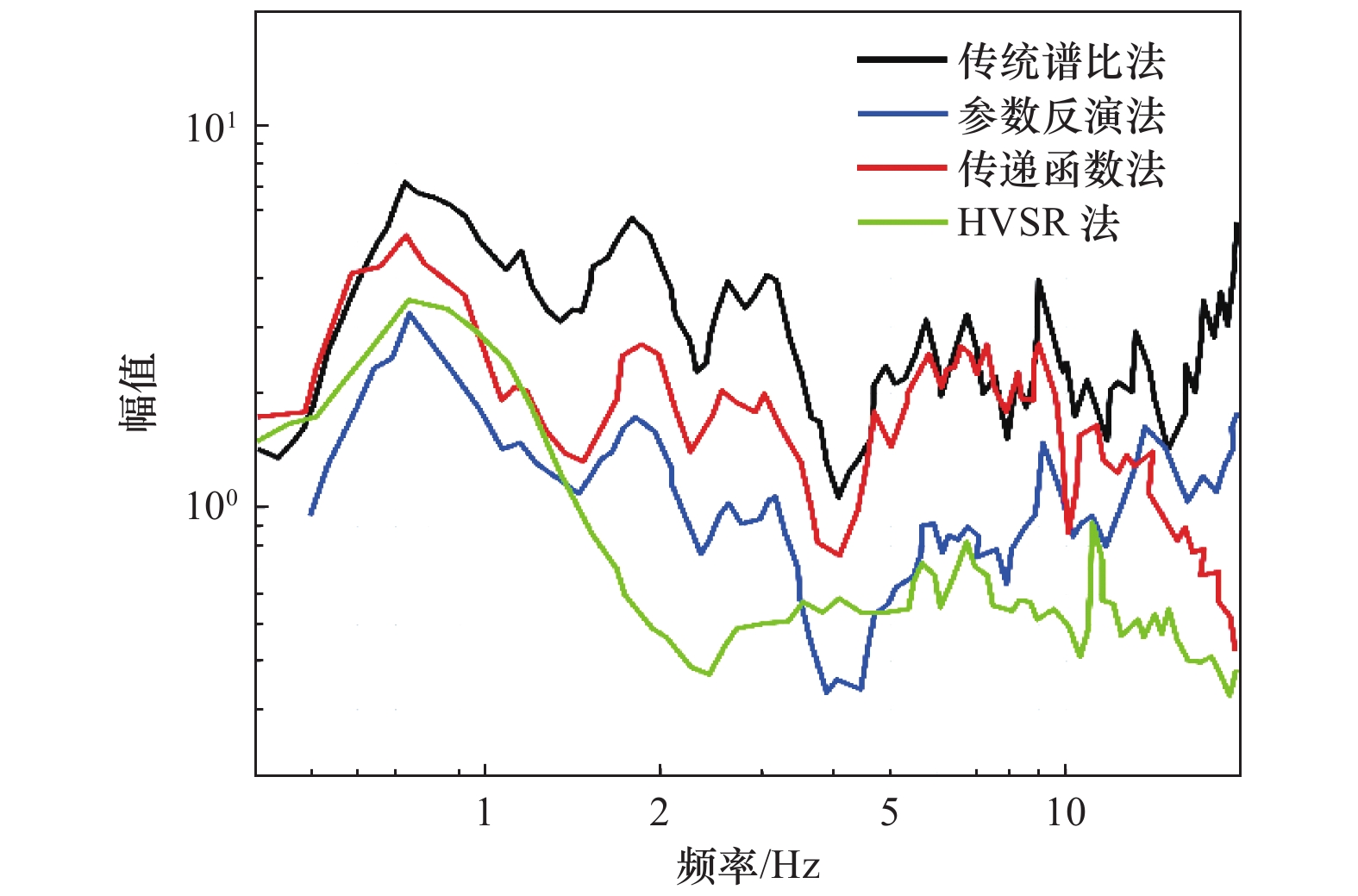
 下载:
下载:
